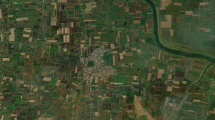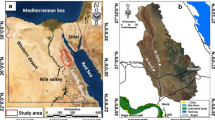Abstract
Natural disasters are an unpredictable one, but the damages caused by the disaster is severe. It causes hazards to both humans and their properties. Among many hazards like earthquake, eruption and flood, the flood prediction is a quite predictable one. But, it requires proper learning for predicting the floods. Because the flood occurs due to the overflow of water from dams and rivers which is caused by heavy rainfall. Due to this, proper learning based on the weather conditions and previous flood data, the possibility of flood range and area can be detected. Such a flood prediction is performed on the real-time data set collected from the Columbia province. It uses data mining approach on the collected information for forecasting the flood level. But, it is not only sufficient for real time. Hence, the image-based flood prediction is proposed to analyse the flood level in the particular region using a satellite image of the area. Yet, both the techniques offer good prediction in the individual unit it suffers from predicting the nearby flood areas. Hence, in this, a combined approach of image processing and data mining is proposed to forecast the flood level. For data mining, the regression learning approach is used to forecast future flood levels. It is combined with the corresponding image processing of the particular area to accurately the flood level based on extracting the depth of water in the area. Finally, the predicted level is broadcasted to the people through social media for immediate action to save their lives. The proposed regression-based data mining and image analysis help to forecast the level of flood in the area accurately along with broadcasting saves precious lives of people.
Access this chapter
Tax calculation will be finalised at checkout
Purchases are for personal use only
Similar content being viewed by others
References
B. Jamali, R. Löwe, P.M. Bach, C. Urich, K. Arnbjerg-Nielsen, A. Deletic, A rapid urban flood inundation and damage assessment model. J. Hydrol. 564, 1085–1098 (2018)
Z. Liu, V. Merwade, Accounting for model structure, parameter and input forcing uncertainty in flood inundation modeling using Bayesian model averaging. J. Hydrol. 565, 138–149 (2018)
J.T.S. Savage, P. Bates, J. Freer, J. Neal, G. Aronica, When does spatial resolution become spurious in probabilistic flood inundation predictions? Hydrol. Process. 30(13), 2014–2032 (2016)
S. Kabir, S. Patidar, X. **a, Q. Liang, J. Neal, G. Pender, A deep convolutional neural network model for rapid prediction of fluvial flood inundation. J. Hydrol. 590, 125481 (2020)
H.I. Kim, H.J. Keum, K.Y. Han, Real-time urban inundation prediction combining hydraulic and probabilistic methods. Water 11(2), 293 (2019)
J. Teng, A.J. Jakeman, J. Vaze, B.F. Croke, D. Dutta, S. Kim, Flood inundation modelling: a review of methods, recent advances and uncertainty analysis. Environ. Model. Softw. 90, 201–216 (2017)
J. Thomas Steven Savage, F. Pianosi, P. Bates, J. Freer, T. Wagener, Quantifying the importance of spatial resolution and other factors through global sensitivity analysis of a flood inundation model. Water Resour. Res. 52(11), 9146–9163 (2016)
Z. Liu, V. Merwade, K. Jafarzadegan, Investigating the role of model structure and surface roughness in generating flood inundation extents using one-and two-dimensional hydraulic models. J. Flood Risk Manage. 12(1), e12347 (2019)
Y.H. Tak, J.D. Kim, Y.D. Kim, B. Kang, A study on urban inundation prediction using urban runoff model and flood inundation model. J. Korean Soc. Civ. Eng. 36(3), 395–406 (2016)
S. Afshari, A.A. Tavakoly, M.A. Rajib, X. Zheng, M.L. Follum, E. Omranian, B.M. Fekete, Comparison of new generation low-complexity flood inundation map** tools with a hydrodynamic model. J. Hydrol. 556, 539–556 (2018)
J.F. Rosser, D.G. Leibovici, M.J. Jackson, Rapid flood inundation map** using social media, remote sensing and topographic data. Nat. Hazards 87(1), 103–120 (2017)
S. Gobeyn, A. Wesemael, Van J. Neal, H. Lievens, K. Eerdenbrugh, Van N. Vleeschouwer, H. De Vernieuwe, G.J.P. Schumann, G. Di Baldassarre, B. Baets, P.D. De Bates, Impact of the timing of a SAR image acquisition on the calibration of a flood inundation model. Adv. Water Resour. 100, 126–138 (2017)
C.A. Buahin, N. Sangwan, C. Fagan, D.R. Maidment, J.S. Horsburgh, E.J. Nelson, V. Merwade, C. Rae, Probabilistic flood inundation forecasting using rating curve libraries. JAWRA J. Am. Water Resour. Assoc. 53(2), 300–315 (2017)
D.T. Mai, F. De Smedt, A combined hydrological and hydraulic model for flood prediction in Vietnam applied to the Huong river basin as a test case study. Water 9(11), 879 (2017)
J. French, R. Mawdsley, T. Fujiyama, K. Achuthan, Combining machine learning with computational hydrodynamics for prediction of tidal surge inundation at estuarine ports. Proc. IUTAM 25, 28–35 (2017)
H. McGrath, J.F. Bourgon, J.S. Proulx-Bourque, M. Nastev, A.A. El Ezz, A comparison of simplified conceptual models for rapid web-based flood inundation map**. Nat. Hazards 93(2), 905–920 (2018)
J.Y. Lee, D. Kim, K.W. Park, T.W. Kim, Establishment of accuracy criteria of flood inundation map using quantitative evaluation indices. J. Korean Soc. Civ. Eng. 39(3), 381–389 (2019)
H. Mojaddadi, B. Pradhan, H. Nampak, N. Ahmad, A.H.B. Ghazali, Ensemble machine-learning-based geospatial approach for flood risk assessment using multi-sensor remote-sensing data and GIS. Geomatics Nat. Hazards Risk 8(2), 1080–1102 (2017)
L.C. Chang, M.Z.M. Amin, S.N. Yang, F.J. Chang, Building ANN-based regional multi-step-ahead flood inundation forecast models. Water 10(9), 1283 (2018)
P.T.T. Ngo, N.D. Hoang, B. Pradhan, Q.K. Nguyen, X.T. Tran, Q.M. Nguyen, P. Samui, D. Tien Bui, A novel hybrid swarm optimized multilayer neural network for spatial prediction of flash floods in tropical areas using sentinel-1 SAR imagery and geospatial data. Sensors 18(11), 3704 (2018)
Story Map Swipe and Spyglass, 2020. Retrieved 19 Nov 2020, from https://scemd.maps.arcgis.com/apps/StorytellingSwipe/index.html?appid=d073b65eeee14704ae1fdbf034dc0b58
M.E. Phillips, Hurricane Florence Twitter Dataset, 2018-09-05/2018-10-03; https://digital.library.unt.edu/ark:/67531/metadc1259406/. Accessed 19 Nov 2020. University of North Texas Libraries, UNT Digital Library, https://digital.library.unt.edu
Author information
Authors and Affiliations
Editor information
Editors and Affiliations
Rights and permissions
Copyright information
© 2022 The Author(s), under exclusive license to Springer Nature Singapore Pte Ltd.
About this paper
Cite this paper
Rajeshkannan, C., Kogilavani, S.V. (2022). Modelling of Flood Prediction by Optimizing Multimodal Data Using Regression Network. In: Shakya, S., Bestak, R., Palanisamy, R., Kamel, K.A. (eds) Mobile Computing and Sustainable Informatics. Lecture Notes on Data Engineering and Communications Technologies, vol 68. Springer, Singapore. https://doi.org/10.1007/978-981-16-1866-6_35
Download citation
DOI: https://doi.org/10.1007/978-981-16-1866-6_35
Published:
Publisher Name: Springer, Singapore
Print ISBN: 978-981-16-1865-9
Online ISBN: 978-981-16-1866-6
eBook Packages: Intelligent Technologies and RoboticsIntelligent Technologies and Robotics (R0)




